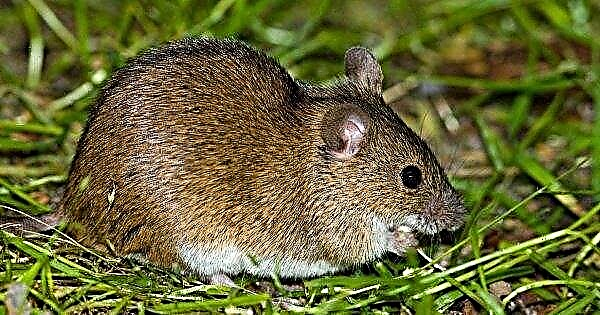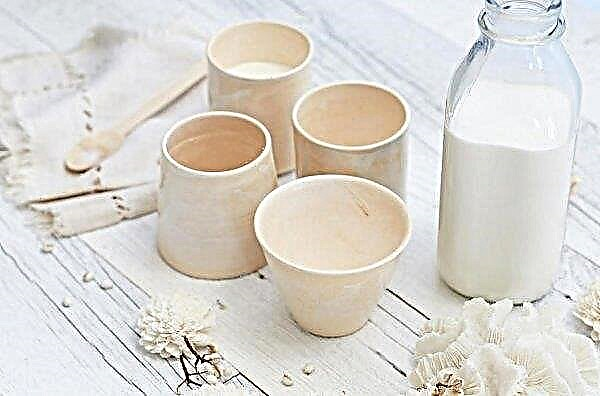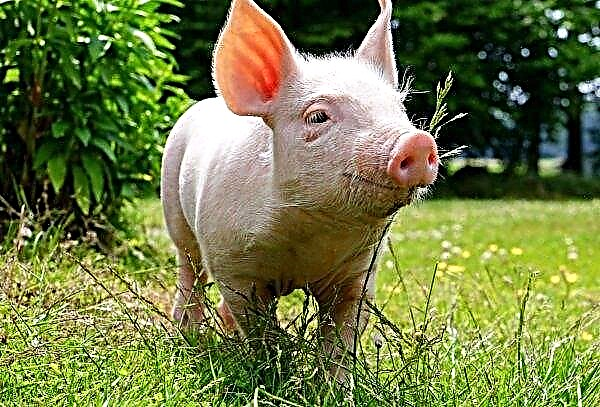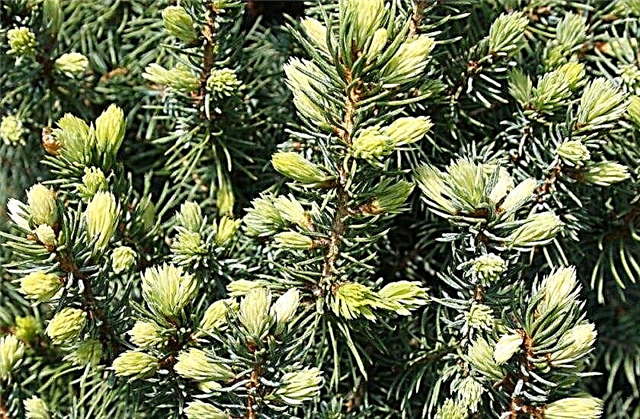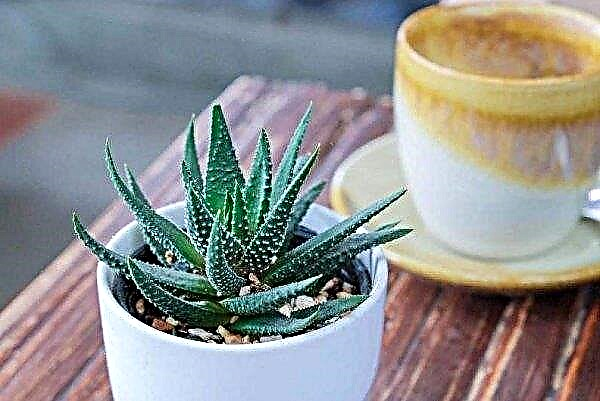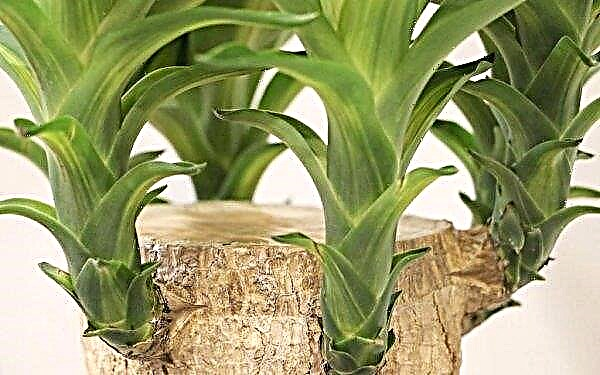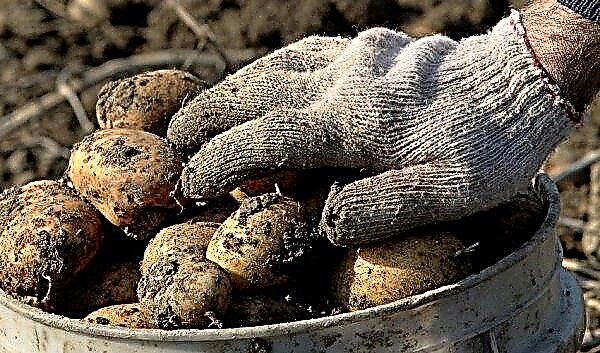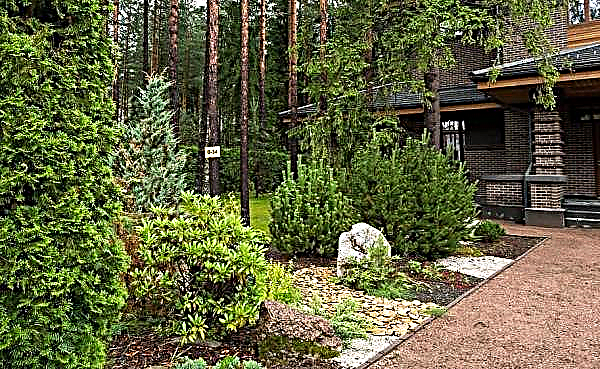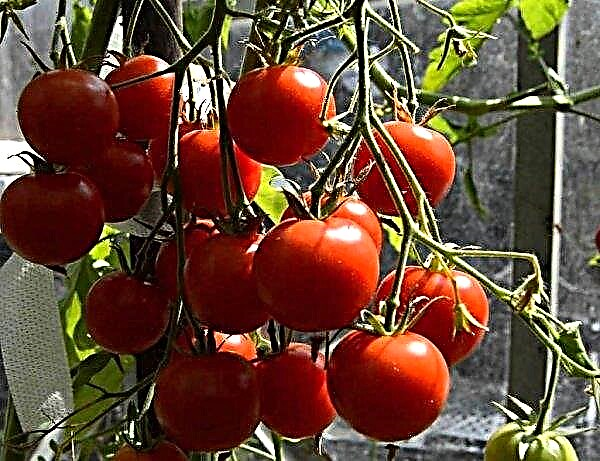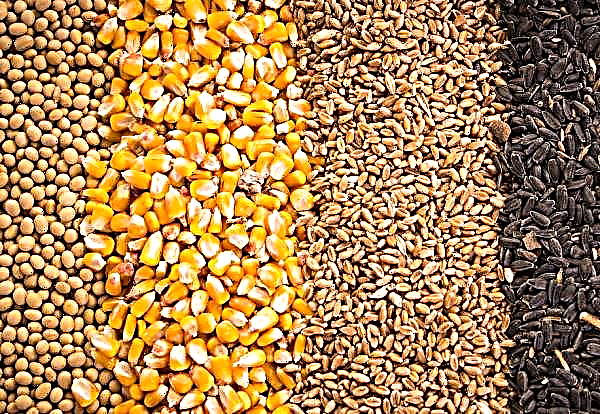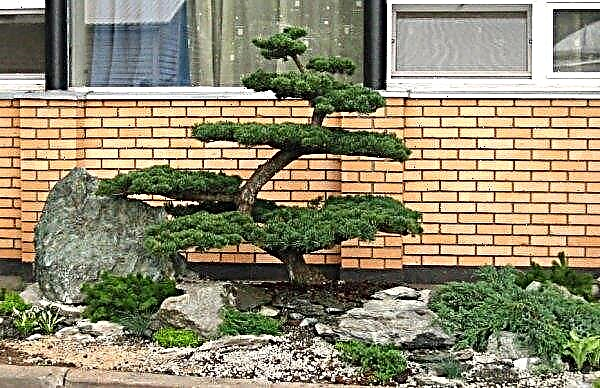Large-leaved hydrangea is a lush garden shrub. The plant, in addition to dense, brightly colored inflorescences, has decorative foliage. Among the varieties of the species, Yu and Mi Forever is popular among gardeners. About him - later in the article.
Grade description
Hydrangea You and Me Forever is the fruit of the work of French breeders. Large-leaved variety grows up to a meter in height. It has a compact, dense, rounded crown with a diameter of about 80 cm.
The shoots of the plant are thick, flexible, grow straight up. Branches are densely leafy, with large, up to 20 cm in length, foliage. The edges of the plates are fine-toothed, the leaf is wide, streaked with veins of light green color.
During flowering, large, up to 18 cm in diameter, inflorescences in the form of a shield are formed. At the very beginning, small flowers are simple, painted pale green. As they bloom, the petals become terry and, depending on the characteristics of the soil, become blue (sour) or pink with a purple tint (alkaline).
The peculiarity and dignity of the variety are resistance to low temperatures (up to -29 ° C), as well as the ability to form inflorescences on the branches of the current year. Gardeners are also pleased with the flowering time - from July to September.
Did you know? For the ability to change the color of the petals, in the countries of the Middle East, hydrangea is called a "fashionista".
Hybrids
Since the plant was successful in horticultural circles, breeders bred You and Me Forever hybrids. The resulting varieties of hydrangea (scientific name) have all varietal characteristics. The new varieties are very similar to the parent plant, but also some differences.
Tughese (Together)
Large-leaved or macrophylla (in Latin) Yu and Mi Tugese differs in inflorescences up to 20 cm in diameter, with a rounded shape. Terry flower baskets are painted in pale and bright pink tones, as small as in the parent variety.

Green shoots, upright, forming a dense spherical crown. The marginal branches, unlike the central ones, bend the apex. Bush height - 80–90 cm. The leaves are bright green, with a serrated edge, veins and a sharp tip.
Did you know? In the language of flowers, hydrangea means modesty and hope, a bouquet is a reminder of oneself. According to another version, hydrangea is considered a symbol of vanity and indifference, due to large inflorescences, which sometimes hide both branches and foliage under themselves.
Love (Love)
Unlike the first two varieties, You and Me Love bush high - up to one and a half meters. The crown is dense, the outer branches are arched, the inner ones grow straight. The sheet plates are bright with a glossy surface. Terry floral guards, up to 15-18 cm in diameter, blue or pink color. The variety is characterized by increased resistance to fungal diseases of the culture. Winter hardiness is slightly lower than in previous plants: resists frosts to -23 ° C.

In landscape design
Hydrangea is characterized by long flowering, which allows her to choose a large number of annuals and perennials as her partners. An excellent neighborhood will turn out at a large-leaved shrub with low species of spirea, barberry and weigela.
The round inflorescences of hydrangea flowers and ground cover plants will well shade:
- stonecrop;
- aster;
- peony;
- rose flower;
- lupine;
- heather;
- lily.
The shrub perfectly combines with undersized coniferous representatives:
- juniper;
- thuja;
- fir.
 The plant will decorate any part of the garden - a flower bed, a lawn, the shore of an artificial reservoir
The plant will decorate any part of the garden - a flower bed, a lawn, the shore of an artificial reservoir
Landing
Previously, hydrangea was often grown in conservatories and greenhouses. The undersized bushes in the pot were carried outside in the spring and autumn and cleaned for warmth in the winter. Now, with the advent of winter-hardy varieties such as Forever, plants can be grown in open ground. Moreover, the described cultures are unpretentious in care.
Dates and place for landing
Landing is carried out in the spring, as soon as the soil warms up to + 8 ... + 10 ° C and the threat of return frosts passes. The place is chosen shaded, but with sufficient lighting. In the full shadow, the inflorescences become friable and smaller. Well, if there is shelter from the draft, sharp gusts of wind can tear a young bush out of the ground.
The soil can be both acidic and alkaline, but it should be with good throughput. 14 days before planting, the site is dug up, cleaned of vegetable debris.
The hole should be 50 × 50 cm in size, with drainage at the bottom, half filled with nutrient soil:
- garden land - 2 parts;
- peat - 2 parts;
- humus - 1 part;
- fallen needles - 1 part.

Seedling selection and preparation
It is advisable to purchase seedlings with closed roots in the nursery, where there are certificates for the goods.
Signs of a healthy plant:
- the earth lump is evenly braided by the roots;
- the soil is moist;
- root shoots are flexible, without spots and mold;
- the presence of 2-3 branches located symmetrically to the stem.
Before planting, the roots of the seedling are placed for a couple of hours in water to moisturize well.
Landing algorithm
It is recommended to plant hydrangea on a cloudy day or in the evening. The sequence of actions is as follows:
- Place the seedling in the pit, spread the roots.
- Sprinkle with soil, leaving the root neck above the surface.
- Tamp, excluding air pockets.
- Pour a bucket of water and cover the trunk circle with mulch from peat.

Care
Hydrangea is an unpretentious plant, the main condition for growing which is timely competent watering. Feeding is also important, especially during budding. The culture does not need an annual haircut, which gives the gardener more free time. Low bushes, in spite of winter hardiness, need shelter for the winter.
Video: Large-leaved Hydrangea: care, shelter for the winter
Watering
The first irrigation of the soil is carried out with a light pink solution of potassium permanganate. This will protect the young plant from fungal infections. It is best to use rainwater for irrigation, for lack of water - piped, settled.
Important! Due to lack of water, the inflorescences will be loose and weak, and the petals — pale.
The soil should always be moist, but not flooded. From excess water, fungi can develop. Especially carefully you need to monitor soil moisture during the formation of buds.

Fertilizer
It is necessary to feed hydrangea 3-4 times a season. Scheme of the procedure:
- In early spring, a mineral multicomponent composition is used, for example, Pokon. Fertilizer close up in the soil (20 g under the bush).
- For the formation of the crown and the active growth of shoots, fertilizers are applied again before flowering. You can use another drug, such as Fertika for flowering plants (50 g per 1 m²).
- During the formation of buds, the composition of the GreenWorld brand is effective. 3 ml of the drug is stirred in 3 l of water and the soil is irrigated.
In principle, each of these fertilizers can be used throughout the season, but you need to stop feeding after August 15.

Pruning
The first time the bush is cut in the 4th year after planting. In addition to removing dry and damaged branches, shorten the main shoots to the first fruiting bud. The branches growing inside the crown are removed.
Before a cardinal haircut, only sick and weak shoots are regularly cut off, shortened by ¼ too long.

Winter preparations
Before the onset of frost, a layer of mulch (up to 20 cm) of straw or sawdust is applied to the near-trunk circle. The shoots are bent to the ground, covered with dry foliage and covered with spruce branches.
Procedures in the northern regions are recommended to be carried out in the first decade of October. In the south of the country and in the central regions - in the middle or end of the month. In winter, you can additionally warm snow over the bush, but not a very dense layer, so as not to break the branches.

Diseases and Pests
Hybrids and Forever are resistant to diseases and pests.
Important! The main cause of disease or insect attack is improper care. It is necessary to carefully monitor the rate and frequency of watering, top dressing, clean the trunk circle from weeds.
However, there are several problems, and you need to know how to deal with them:
- Downy mildew manifested by a white coating on the foliage. As the disease develops, the plaque turns yellow, spots of rot appear. They get rid of the disease by spraying with a Bordeaux mixture (3%). Processing is carried out 2 times at weekly intervals.

- At chlorosis the leaf plate turns yellow, while the veins do not change color. With a small lesion, you need to feed the bush with iron sulfate (1%). The solution is prepared in a proportion of 10 g / 10 l of water. To treat an advanced condition, the concentration is increased to 50 g / 10 l of water.

- The most common plant pest is spider mite. You can detect it by the web and black dots on the surface of the sheet. Actellik will help fight insects. The solution is prepared in a proportion of 2 ml / 2 l of water.

French-born hydrangea variety You and Me Forever received positive reviews from gardeners. The plant adapts perfectly to conditions, blooms luxuriantly and smells good.




